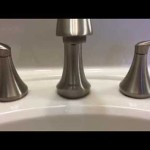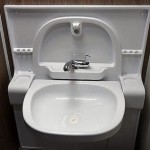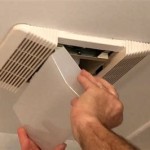How To Get Rid Of Mould On Bathroom Silicone
Mould growth on bathroom silicone is a common problem in many households. Bathrooms, by their very nature, are humid environments, and this moisture, combined with warmth and poor ventilation, creates ideal conditions for mould spores to thrive. Silicone sealant, commonly used around bathtubs, showers, and sinks, is particularly susceptible to mould because its porous surface can trap moisture and organic matter, providing a food source for mould. Addressing this issue promptly is essential, not only for aesthetic reasons but also for maintaining a healthy indoor environment. Mould can trigger allergies, respiratory problems, and other health issues, especially in individuals with pre-existing sensitivities.
The presence of mould on bathroom silicone is indicated by dark, often black or greenish, spots or streaks. These spots can appear unsightly and contribute to a general feeling of uncleanliness in the bathroom. Beyond the visible signs, a musty odour can also indicate a mould problem, even if the growth is not readily apparent. Identifying the problem early and taking appropriate action helps prevent the mould from spreading and becoming more difficult to eradicate.
This article provides a comprehensive guide on how to effectively remove mould from bathroom silicone, covering a range of methods from readily available household solutions to more specialized cleaning agents. It also emphasizes the importance of preventative measures to minimize the likelihood of mould recurrence. The information presented aims to equip homeowners with the knowledge and tools necessary to maintain a mould-free and healthy bathroom environment.
Understanding the Nature of Mould Growth on Silicone
To effectively combat mould growth on bathroom silicone, it's important to understand why it occurs in the first place. Mould spores are ubiquitous, meaning they are present in the air both indoors and outdoors. They only become a problem when they find a suitable environment to germinate and grow. In bathrooms, the combination of moisture (from showers, baths, and general humidity), warmth (from heated air and warm water), and a food source (soap scum, dead skin cells, and other organic matter) creates the perfect breeding ground for mould.
Silicone sealant, while waterproof, is not entirely mould-proof. Its slightly porous surface can trap moisture and organic matter, providing a substrate for mould to colonize. Furthermore, some types of silicone are more prone to mould growth than others. Cheaper, lower-quality silicone sealants often lack the antimicrobial additives found in higher-quality products, making them more susceptible to mould infestation. Even with antimicrobial additives, however, silicone can still develop mould over time, especially if it is not properly maintained.
The type of mould commonly found on bathroom silicone is often black mould, scientifically known as *Stachybotrys chartarum*. While all mould should be addressed, some species, including black mould, can produce mycotoxins, which are toxic substances that can have adverse health effects. Therefore, it is crucial to eliminate mould growth as soon as it is detected and to take precautions to minimize exposure during the cleaning process.
Proper ventilation is a key factor in preventing mould growth. Adequate ventilation helps to reduce humidity levels in the bathroom, making it less conducive to mould growth. Repairing any leaks or sources of excess moisture is also essential. Addressing these underlying causes of moisture buildup will significantly reduce the risk of mould recurring after cleaning.
Effective Cleaning Methods for Mould Removal
Several methods can be employed to remove mould from bathroom silicone, ranging from simple household solutions to more specialized mould-killing products. The choice of method will depend on the severity of the mould growth and personal preferences.
1. White Vinegar: White vinegar is a natural and effective cleaning agent that can kill many types of mould. Its acidity inhibits mould growth without the harsh chemicals found in some commercial cleaners. To use vinegar, simply pour undiluted white vinegar into a spray bottle and saturate the affected silicone areas. Let it sit for at least an hour, or preferably overnight, to allow the vinegar to penetrate the mould. After soaking, scrub the area with a stiff brush or sponge to remove the dead mould. Rinse thoroughly with water and dry the area completely. For stubborn stains, the process can be repeated.
2. Baking Soda Paste: Baking soda is another natural and gentle abrasive cleaner that can help remove mould. Its mild alkalinity also helps to inhibit mould growth. To create a baking soda paste, mix baking soda with a small amount of water until you have a thick, spreadable consistency. Apply the paste to the mouldy silicone and let it sit for several hours or overnight. Scrub the area with a brush or sponge and rinse thoroughly with water. Baking soda is particularly effective for removing surface mould and stains.
3. Bleach Solution: Bleach is a powerful disinfectant that can effectively kill mould, but it should be used with caution. Bleach can damage some surfaces and can release harmful fumes. When using bleach, always wear gloves and eye protection and ensure adequate ventilation. Dilute bleach with water according to the manufacturer's instructions (typically a 1:10 ratio). Apply the bleach solution to the mouldy silicone using a spray bottle or sponge. Let it sit for 10-15 minutes, then scrub the area with a brush or sponge. Rinse thoroughly with water and dry the area completely. It is crucial to remember that bleach primarily removes the stain caused by mould but may not kill the mould spores embedded within the silicone. Therefore, repeated applications may be necessary.
4. Hydrogen Peroxide: Hydrogen peroxide is a less harsh alternative to bleach that can still effectively kill mould. It is non-toxic and environmentally friendly. Pour 3% hydrogen peroxide into a spray bottle and saturate the mouldy silicone. Let it sit for 10-20 minutes, then scrub the area with a brush or sponge. Rinse thoroughly with water and dry the area completely. Hydrogen peroxide may lighten the silicone slightly, so it is advisable to test it in an inconspicuous area first.
5. Commercial Mould Removers: Several commercial mould removers are specifically designed for use in bathrooms. These products often contain strong chemicals that effectively kill mould and remove stains. When using commercial mould removers, always read and follow the manufacturer's instructions carefully. Wear gloves and eye protection, and ensure adequate ventilation. Some products may require scrubbing, while others can simply be sprayed on and left to dry.
Regardless of the cleaning method chosen, it is essential to scrub the silicone thoroughly to remove all traces of mould. A stiff brush, old toothbrush, or abrasive cleaning pad can be used for scrubbing. Pay particular attention to crevices and corners where mould is likely to accumulate. After cleaning, thoroughly dry the area to prevent mould from recurring.
Preventative Measures to Minimize Mould Recurrence
Removing mould is only half the battle. To prevent mould from recurring, it is essential to implement preventative measures that address the underlying causes of mould growth. The following strategies can help minimize the likelihood of mould returning to bathroom silicone:
1. Improve Ventilation: Adequate ventilation is crucial for reducing humidity levels in the bathroom. Ensure that the bathroom exhaust fan is working properly and use it whenever showering or bathing. If the bathroom does not have an exhaust fan, consider installing one. Opening a window after showering or bathing can also help to ventilate the room and reduce moisture buildup. Leaving the bathroom door open after use can also improve air circulation.
2. Control Moisture Levels: Minimizing moisture in the bathroom is essential for preventing mould growth. Wipe down wet surfaces, such as shower walls and doors, after each use. Repair any leaks or drips promptly to prevent water from accumulating. Consider using a dehumidifier in the bathroom if humidity levels are consistently high. Check for condensation on windows and walls, and address any issues that may be contributing to moisture buildup.
3. Regular Cleaning: Regular cleaning helps to remove soap scum, dead skin cells, and other organic matter that can serve as a food source for mould. Clean the bathroom silicone at least once a week with a mild detergent or a vinegar solution. Pay particular attention to areas that are prone to mould growth, such as around the bathtub, shower, and sink. Use a brush or sponge to scrub the silicone thoroughly. Rinse and dry the area completely after cleaning.
4. Use Mould-Resistant Products: When installing or replacing bathroom silicone, choose a mould-resistant sealant. These products contain antimicrobial additives that inhibit mould growth. Look for sealants that are specifically labelled as "mould-resistant" or "mildew-resistant." Regularly inspect the silicone for signs of damage or deterioration, and replace it as needed. Damaged or cracked silicone can trap moisture and provide a breeding ground for mould.
5. Consider Professional Mould Remediation: In cases of severe or widespread mould growth, it may be necessary to seek professional mould remediation services. Professional mould remediation companies have the expertise and equipment to safely and effectively remove mould and address underlying moisture problems. They can also identify and address any hidden mould growth that may be contributing to the problem.
By implementing these preventative measures, homeowners can significantly reduce the risk of mould recurring on bathroom silicone and maintain a healthy and mould-free bathroom environment. Regular maintenance and proactive efforts are key to preventing mould growth and ensuring a clean and healthy home.
How To Remove Black Mould From Silicone Sealant And Rejuvenate Your Bathroom
How To Clean Black Mold Off Silicone In The Shower All Coast Inspections

How To Get Rid Of Mould In Shower Silicone The Doctor

How To Clean Mould Off Bathroom Sealant Fantastic Services

How To Remove Black Mould From Silicone Sealant Groom Property Maintenance

Learn How To Remove Black Mold From Shower Silicone Sealant Clean Deep Cleaning Tips House

How To Clean Mould Off Silicone Sealant In Your Bathroom Best Ingredients Express Co
How To Remove Mould From Shower Including Silicone Grout

How To Remove Mold From Shower Caulking Home Like You Mean It

Black Mould Get Rid Of With Bleach And Toilet Roll Express Co
Related Posts







